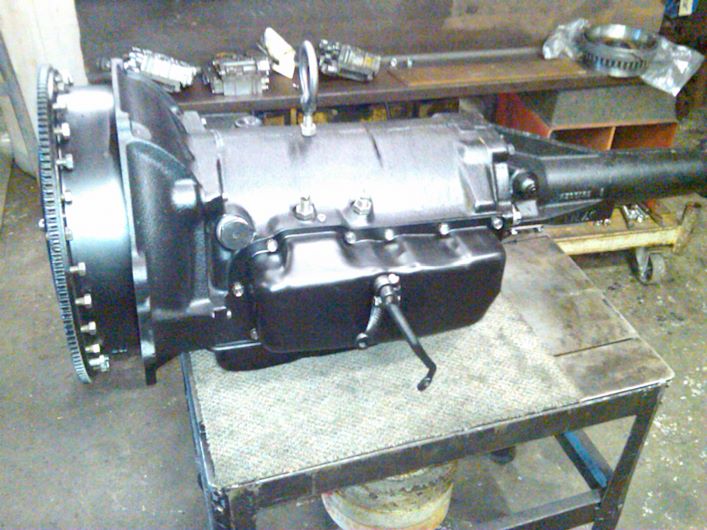Dynaflow Transmission
- Our 1957-1958 Dynaflow kit includes: Cork Pan gasket, Transmission seal & gasket set, Rubber(lip seal) angular seal set, Torque converter O ring, Six clutch plates, Six steel plates, Sealing Ring kit, Front pump bushing, Front seal.
- Whether you need DYNAFLOW wiring diagram information, DYNAFLOW transmission rebuilders tips, DYNAFLOW technical information, DYNAFLOW diagnostics, DYNAFLOW troubleshooting help, or just answers to your DYNAFLOW transmission rebuilders question, the Transmission Rebuilders Network is.
Comparing a 1955 Buick Dynaflow trans with a Model T Ford trans.

Group 5 dynaflow transmission. Dynaflow specifications and description. Dynaflow trouble diagnosis - adjustments on car. Dynaflow transmission removal and installation, disassembly and assembly. Copyright teambuick.com. BUICK DYNAFLOW TRANSMISSION Gasket & Seal Kit 1948-1963. Please provide the year of your.
From 1948 through 1963, Buicks were like no other cars on the road, because they were equipped with Dynaflow Drive.

Like many of the early innovations in automatic transmissions at General Motors, the Dynaflow was the work of GM engineer Oliver K. “O.K.” Kelley, the kind of rare talent who could fairly be called a mechanical genius. Born in Salo, FInland in 1904 as Olavi Koskenhovi, he came to the United States as a teenager, Americanized his name, and earned bachelor’s and master’s degrees in engineering from Chicago Technical College. He entered the auto industry as a draftsman at Nash in 1925, and in 1929 he went to work for GM’s Truck and Coach division, where he found his calling in specialized transmissions and couplings.
In 1936, Kelley joined Earl Thompson’s transmission engineering team at GM, developing the original Hydra-Matic, and when Thompson left GM in 1940, Kelley took over his position. Small world department, Motor City desk: Among other things, Kelley is the man who, in 1956, invited Packard engineer John Z. DeLorean to come to work at GM.

Introduced in 1948, the Dynaflow transmission arose from a special set of needs at the Buick Motor Division. Unlike Oldsmobile, Cadillac, and Pontiac, Buick pushed back against adopting the corporate Hydra-Matic automatic transmission. While the Hydra-Matic was a major breakthough it was not without its shortcomings, including firm gear changes (downright harsh, some would say) especially on the 2-3 upshift. This property was a poor fit with the classic Buick driveline of the period, which used a rigid torque tube assembly suspended by a pair of plush coil springs at the rear. Here, a stiff upshift could send a shock wave though the entire drivetrain, the car, and through the passengers too—unacceptable behavior for a fine car like Buick. In those days, the straight-eight Buick was prized for its luxurious quiet and smoothness.
With the Dynaflow, Kelley and his staff solved the problem by eliminating mechanical upshifts altogether. While the Hydra-Matic used a simple 1:1 fluid coupling and planetary gearsets to provide the torque multiplication for acceleration, the Dynaflow employed a five-element, dual-stator torque converter with an effective mechanical advantage of 3:1. (The engineering was based in part on the Torqmatic, a transmission developed by GM’s Detroit Transmission division for the M-18 Hellcat tank destroyer in WWII.) As the Dynaflow-equipped vehicle took off from a dead stop and accelerated to highway speed, the driver never felt any perceptible upshifts, because there weren’t any. All the work was done by the torque converter.
The original Dynaflow did include a planetary gearset section to provide a mechanical 1.8:1 first gear and a reverse, but the transmission was incapable of engaging them automatically—they had to be manually selected by the driver via the column-mounted lever. (The selector pattern was PNDLR.) In this property the Dynaflow was similar to the Chevrolet Powerglide that appeared a few years later. (Read our Powerglide feature here.) And just as the Powerglide won the cruel nickname “Slip-and-slide,” the Dynaflow became known as the “Dynaslush,” or even worse, “Dynaflush.” While it’s true that the Dynaflow suffered more slippage than conventional automatics, what the driver felt was an odd disconnect between flywheel and road wheels, engine speed and road speed. Gliding along at highway speed it was hardly perceptible, but when the pilot mashed down on the throttle for full acceleration, the sensation was blatantly evident. But fortunately, most Buick drivers didn’t typically drive that way.
Over its 16-year production life the Dynaflow was continually updated. Shown above is Mrs. Thelma Hill, a secretary at the Buick Dynaflow plant in Flint, with a 1946 prototype (left) and the new and improved 1956 version. In 1953 came the Twin Turbine Dynaflow, which employed a single stator with a dedicated planetary gearset, and in 1956 an additional stator was added to make the transmission feel more like a conventional automatic. A more sophisticated variant called the Flight Pitch Dynaflow (optional at extra cost and later renamed the Triple Turbine) was introduced in 1958, but it was fraught with bugs and dropped after ’59.


Throughout its life, the Dynaflow was a Buick exclusive at General Motors with one brief exception. In August of 1953, the giant new GM Hydra-Matic plant on Plymouth Road in Livonia, just west of Detroit, burned to the ground. (At the time, it was the largest industrial fire in history.) As GM scrambled to keep the production lines running for all its passenger car brands, several hundred Oldsmobiles and around 28,000 Cadillacs that year were equipped with Buick Dynaflow transmissions.
Dynaflow Transmission Fluid
While the Dynaflow name was dropped after 1958, the transmission itself lived on (often called “Turbine Drive”) at Buick through 1963, when the Turbo-Hydramatic transmissions arrived. If there is one word that could sum up the Dynaflow today, it’s probably misunderstood. While the “Dynaslush” won its share of derision in its day, that came mainly from people who wouldn’t have purchased Buicks anyway. Among traditional Buick owners, Dynaflow was well regarded. Manual transmissions were available on many Buick models throughout the Dynaflow era, but buyers were relatively rare. For Buick cars and Buick drivers, the Dynaflow was the right transmission for the time.
Dynaflow Transmission Diagram
Related
